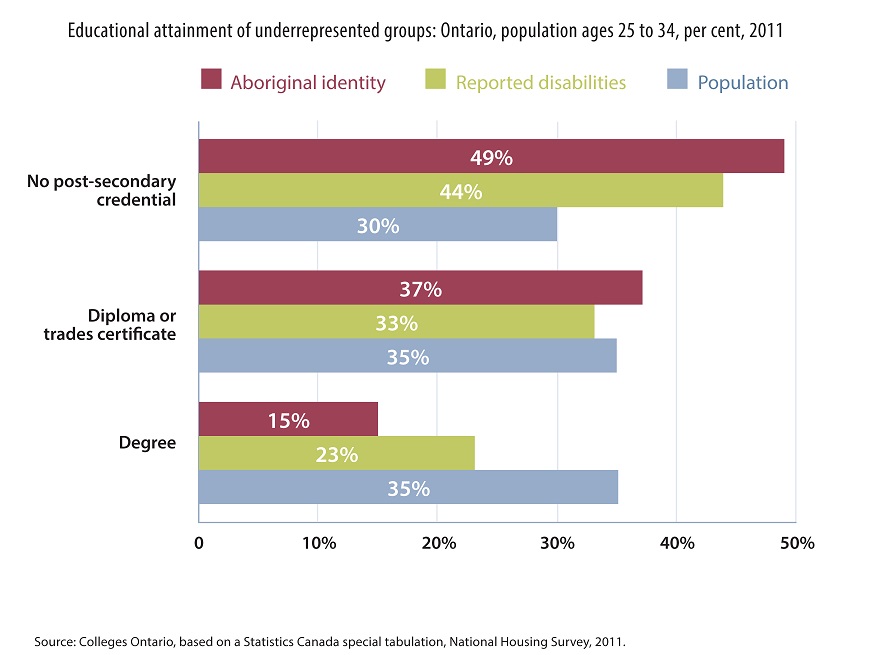by Ingrid Muschta and Joe Dale
In this second part of a five-part series, experts from the Ontario Disability Employment Network explain why HR should tap this talent pool.
Demographic studies suggest a looming labour shortage is on the horizon. According to Statistics Canada, the first of the country's baby boomers reached the age of 65 in the year 2012, and by the end of this decade most boomers will retire from the workforce. In 2015, almost half of Canadian workers were between 45 and 64 years of age. Between a declined in population and an aging workforce, Canada will realize a negative impact on industry and, in turn, the economy. In 2007, the Conference Board of Canada projected vacancies in Ontario could reach 190,000 in the year 2020, rise to 364,000 by 2025, and to 564,000 by 2030.
In its report, Releasing Constraints: Projecting the Economic Impacts of Increased Accessibility in Ontario (2010), the Martin Prosperity Institute notes that, “The most valuable resource in the province [Ontario] is its people. The skills and talents of Ontarians are truly the basis of the province’s prosperity; they attract direct foreign investment, increase Ontarian’s productivity, and closely correlate with Canada’s high scores in global ratings of human development, but these resources are also scarce.”
.jpg) The proportion of Ontarians of working age is declining steeply
The proportion of Ontarians of working age is declining steeply
To address this labour shortage, businesses are now looking at non-traditional labour pools. The question becomes: Can this shortage be addressed effectively by engaging talent and attracting an often underutilized demographic such as people who have a disability? Several studies and successful businesses have demonstrated the positive impact an inclusive workforce has in several key indicators of business profitability.
In a national survey, Environics Research Group (2004) found that 73% of workplaces that employ people who have a disability strongly agree that these employees are contributing as much as others to their organization.
Deloitte (2010) reported that workers who have a disability are typically associated with strong performance, good attendance, and higher than usual job retention. In the US, the Job Accommodation Network (JAN) has been surveying inclusive employers since 2004. In a 2017 survey, results consistently showed the benefits employers receive from making workplace accommodations far outweigh the costs.
Employers report providing accommodations result in benefits which included: retaining valuable employees, improving productivity and morale, reducing workers’ compensation and training costs, and improving company diversity. These benefits were obtained with little investment. The employers in the study report a high percentage (59%) of accommodations cost absolutely nothing to make, while the rest typically cost a mere $500 on average.
People who have a disability are not only willing to enter the workforce, they are also taking a proactive approach to meet the demands in the market.
In their Graduates in the Economy 2016 report, the College of Ontario identified that, “Among young Ontario adults with disabilities or of aboriginal background, the majority of those who have attained a post-secondary education were educated in college or trades programs.”

The report notes as well that college trades and diploma graduates play a key role in economic sectors such as exports (manufacturing, resources and tourism), energy, infrastructure, real estate, and health care.
In that same report, young Ontarians (ages 25 to 34) reporting disabilities or aboriginal identity were found to be as successful in completing college diplomas or becoming certified tradespersons as other Ontarians.
According to the 2013 Federal report, Rethinking Disability in the Private Sector, 40% of young adults who have a disability have a post-secondary degree or diploma. A Carleton University 2015 report revealed students who have a disability are graduating at a higher per capita rate than their cohorts without disabilities.
Despite high levels of educational attainment, post-secondary graduates with a disability have a lower employment rate and lower earnings than those without disabilities. In 2006, there was a 12% gap in the national employment rate for those with and without disabilities aged 15 to 64 with a university degree. Among individuals with a college diploma, the difference between those who have a disability and those without was even larger at 21%.
Furthermore, the gap in representation in the workforce for people with developmental disabilities is larger than those with other types of disabilities. According to the National Association for Community Living, in their 2013 report Inclusion of Canadians with Intellectual Disabilities, the employment rate for working-age adults with an intellectual disability is 25%.
People who have a disability are no different from the rest of the population when it comes to employment – they want to be productive and contributing members to their communities. They are willing, ready, and able to fully participate in the workforce.
To address the looming labour shortage, businesses need to recognize the potential in all people.
Ingrid Muschta is a diversity and inclusion specialist at Ontario Disability Employment Network. Joe Dale is the executive director of Ontario Disability Employment Network.
Related stories:
Can people with disabilities solve Ontario's labour shortage?
Disability discrimination alive and well
Want the latest HR news direct to your inbox? Sign up for HRD Canada's daily newsletter.


.jpg)
